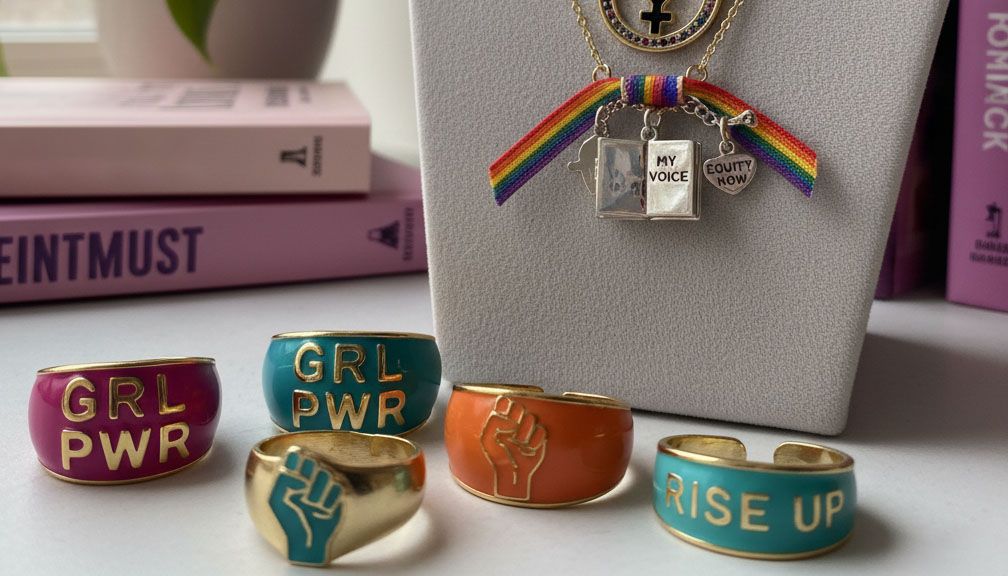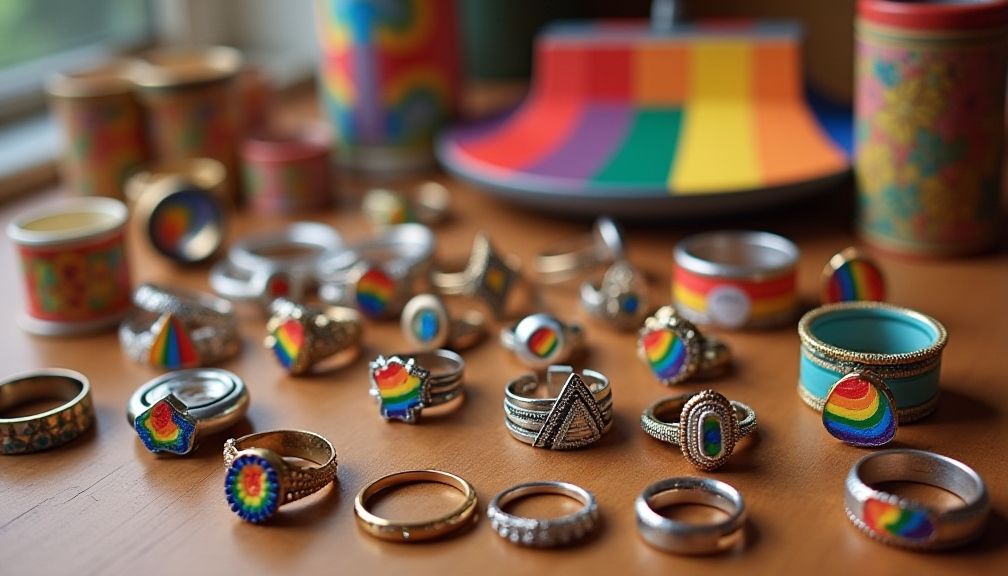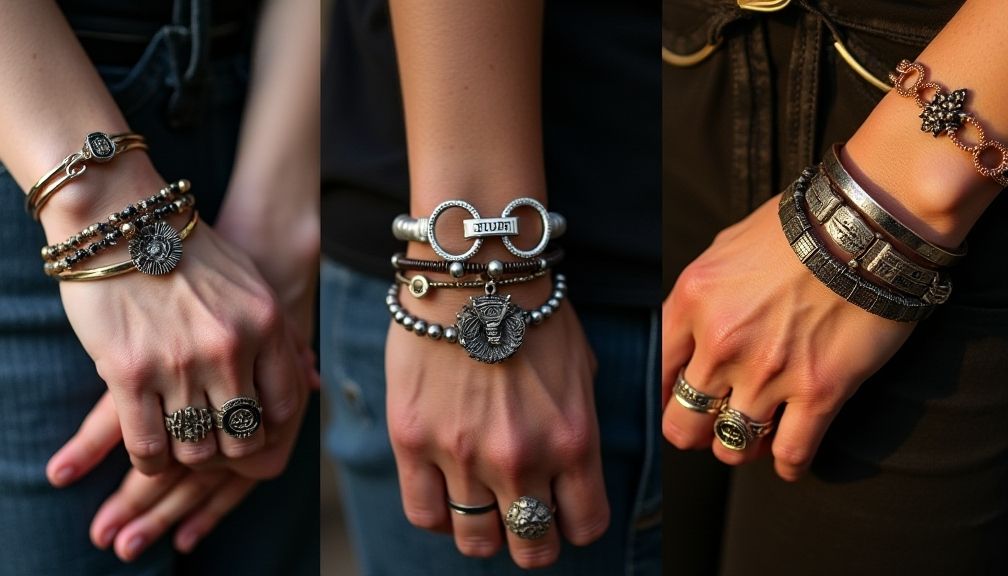Throughout history, jewelry has transcended its traditional role as mere adornment to become a potent form of expression and resistance in protest movements. The intricate web of emotion, culture, and symbolism entwined in jewelry often transforms it into a powerful artifact for social and political change. This blog post will explore various instances in which jewelry has served as a tool for protest, delving into its significant implications across different cultures and historical contexts.
The Symbolism of Jewelry
Jewelry, in its many forms, carries deep-rooted meanings that often go beyond aesthetics. It embodies personal stories, cultural heritage, and social values. The symbolism attached to certain materials, colors, and designs can evoke strong emotions and signal solidarity with various causes.
For example, the color purple is frequently associated with the women’s suffrage movement in the early 20th century. Jewelry crafted in shades of purple served as a visual reminder of the fight for women’s rights. Similarly, the raised fist symbol, a universal emblem of resistance and solidarity, has been incorporated into jewelry designs to showcase unity among activists.

Jewelry in Feminist Movements
The feminist movements of the 20th and 21st centuries have leveraged jewelry as a vehicle for advocacy. Notable examples include the famous “Rings of Power” designed by artist and activist, Judy Chicago. These rings, which represent various women’s rights milestones, are more than mere accessories; they are worn as declarations of female empowerment.
In 2017, during the Women’s March, many participants wore pink hats and feminist-themed jewelry to make their voices heard. Pins and brooches emblazoned with slogans such as “the future is female” or “nevertheless, she persisted” became symbols of solidarity, emphasizing that the fight for equality was far from over.
Jewelry and LGBTQ+ Activism
Jewelry has played a pivotal role in LGBTQ+ activism, particularly in the fight for marriage equality and LGBTQ+ rights. The rainbow flag is a prominent symbol of the LGBTQ+ community, and jewelry designers have created an array of pieces incorporating its colors. These pieces are not only fashionable but also symbolize pride, visibility, and affirmation.
During Pride Month, LGBTQ+ individuals and allies often don jewelry that features rainbow colors, advocating for acceptance and diversity. Moreover, the incorporation of LGBTQ+ symbols in rings, necklaces, and bracelets has allowed people to express their identities openly, fostering a sense of belonging and community.
The Civil Rights Movement and Jewelry
During the American Civil Rights Movement, jewelry served as an instrument of resilience and identity. The “Black Power” movement of the 1960s utilized jewelry to express pride in African heritage. Accessories made from traditional African materials, including beads and metals, were worn to celebrate Black culture and assert individuality.
A notable instance involved the use of handmade jewelry among the Freedom Riders and other activists who sought to challenge segregation. Adorning themselves with culturally significant pieces enabled these activists to reaffirm their identities and display their solid commitment to the cause.
Jewelry as a Form of Economic Protest
Jewelry has also been used to voice economic dissent. In various movements centered around fair trade, artisans create pieces that highlight the importance of ethically sourced materials. Wearing handcrafted items made by local artisans rather than mass-produced jewelry can serve as a statement against exploitative labor practices.
This form of protest can be seen in the push for sustainable fashion, where consumers favor jewelry brands that prioritize ethical labor practices and environmentally-friendly methods of production. Jewelry has thus become a means of not only expressing personal style but also advocating for broader economic structures.
Further Reading:
Cultural Appropriation and Jewelry
Jewelry can also illuminate the issue of cultural appropriation in many social movements. When elements of one culture are borrowed without acknowledgment or respect, it can provoke backlash, drawing attention to the nuances of cultural identity. Activists have used jewelry as a medium to protest against such appropriation by designing pieces that honor their cultural significance.
For instance, Indigenous artists have created sacred pieces that tell stories and represent their cultural heritage, addressing issues of respect and recognition. Wearing these items within the context of protest can challenge narratives of appropriation and highlight the importance of cultural representation.
Modern Movements and Jewelry
In today’s digital age, the role of jewelry in protest movements continues to evolve. Social media platforms provide an avenue for activists to showcase the jewelry associated with their causes, broadening their reach and impact. Movements like “Black Lives Matter” and climate activism have capitalized on jewelry to convey their messages visually.
Artists are also designing pieces specifically for awareness campaigns, including earrings shaped like fists or pendants featuring environmental motifs, turning jewelry into a canvas for advocacy. By wearing these pieces, activists can connect with others who share their beliefs and amplify the message of their movement.

The Impact of Sustainable Jewelry
The growing awareness of climate change and the environmental impact of the fashion industry has led to an increase in sustainable jewelry options. Ethically sourced materials and eco-friendly production practices have become a cornerstone of modern jewelry design.
Wearing sustainable jewelry not only signifies personal style but also represents a commitment to environmental preservation. Activists are using jewelry to raise awareness about environmental issues, drawing parallels between personal choices and larger systemic changes needed to protect the planet.
Conclusion: Jewelry as a Voice of Resistance
Jewelry has proven to be a multifaceted tool for protest movements, offering individuals a means to express their beliefs, culture, and identities. Whether as symbols of feminist strength, markers of LGBTQ+ pride, or declarations against economic injustice, jewelry embodies narratives of resistance that resonate deeply within society.
As we move into an era increasingly defined by social activism, it becomes clear that jewelry is not simply an accessory but a powerful medium of change. The acts of wearing and sharing jewelry can create connectivity, inspire conversations, and drive movements forward. In this way, jewelry serves not only as a personal statement but also as a collective voice for resistance and transformation.








